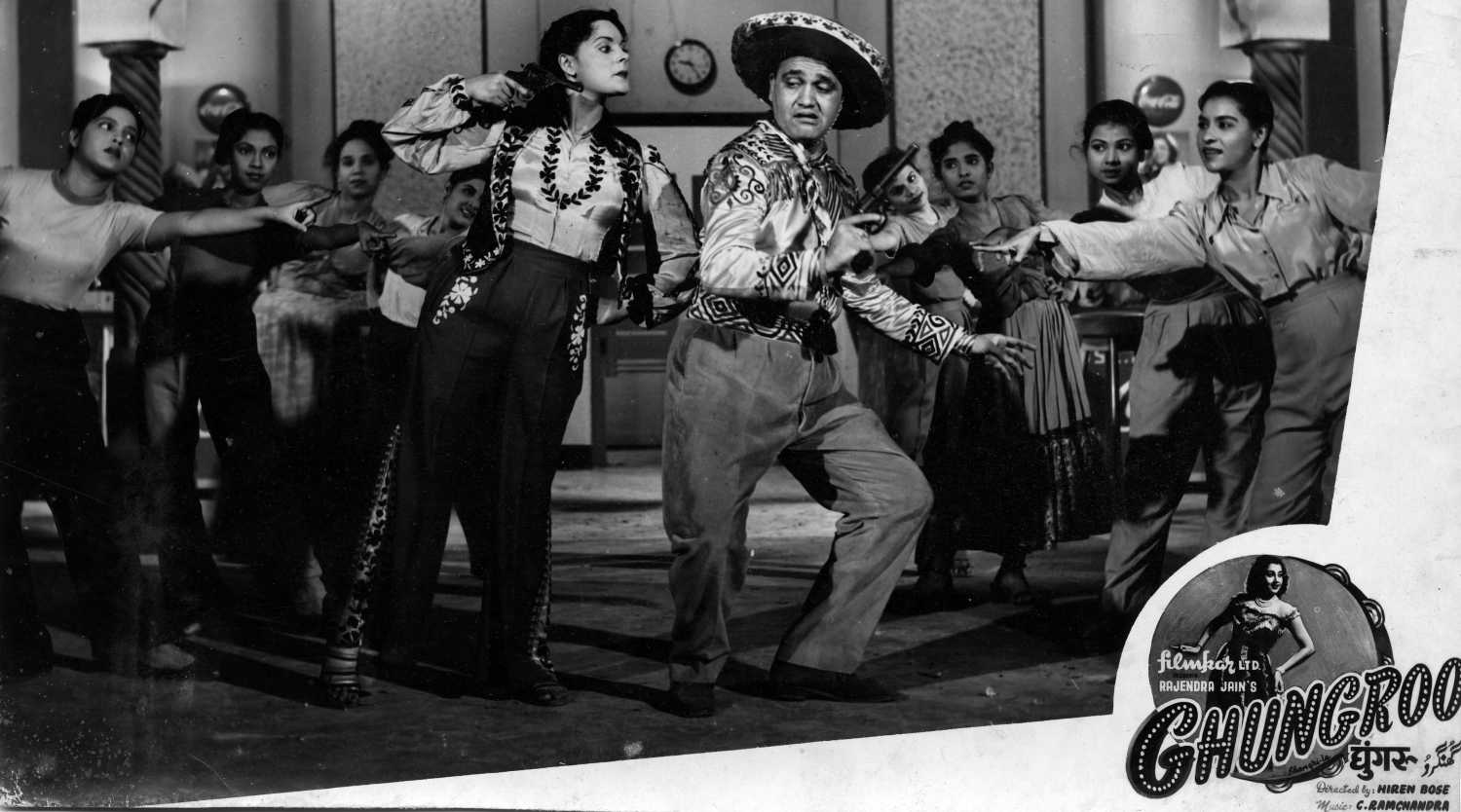Celebrating women in cinema, we begin a series featuring actresses whom time has forgotten. The first is Kuldip Kaur, one of the early vamps in Hindi cinema.
Too hot to handle: Remembering Kuldip Kaur, feisty actress from the 1940s
New Delhi - 18 Feb 2018 21:43 IST
Updated : 25 Feb 2018 22:59 IST


Sukhpreet Kahlon
In Filmistan’s production Anarkali (1953), starring Pradeep Kumar, Bina Rai and Noorjehan in the lead roles, the role of Bahaar is played by an actress with sharp features and expressive face. That is Kuldip Kaur, one of the early vamps of Hindi cinema.
Described as “too hot to handle” by Sa'adat Hasan Manto, Kuldip Kaur lived a life seemingly filled with adventure. She hailed from a rich Sikh family from Attari, Punjab, was married off at the age of 14, and became a mother by the time she was 16.
Kuldip Kaur was trying to secure a place for herself in the Lahore film industry when the Partition of India took place. She was involved with the actor Pran at the time and the two left Lahore together and came to Bombay.
In an interesting incident recounted by Manto in his book Stars from Another Sky, the couple left Lahore in such a hurry that Pran’s car was left behind. 'Kuldip, not one to be afraid of anything, including men, whom she could wrap around her little finger, came to Lahore while the communal rioting was in full fury and drove the car all the way back to Bombay,' wrote Manto.
One of Kuldip Kaur's first films was the Punjabi movie Chaman (1948), which did very well. In the same year, two Hindi films with her in the cast, Ziddi, which made Dev Anand a star, and Grahasthi, were also released and also did good business. Both films also featured her beau Pran.
This was a time in Hindi cinema when the mistress or ‘other woman’ was emerging as a vamp, breaking up marital bliss in the home. In the 1930s, it had mostly been the sister-in-law or mother-in-law who had been the oppressive figure in family dramas.

The mistress in films was usually a Westernized figure, with sharp features, mannerisms and values that offered a stark contrast to the chaste and homely heroines. Significantly, the vamps would seduce the heroes, and facial expressions, dialogues and lyrics served as their tools of seduction.
The leading ladies of the era, from Durga Khote and Naseem Bano to Madhubala, Nargis, Suraiya and Nutan, all had the main roles, creating a shortage of women willing to perform the role of vamps. 'She had finely chiselled features and she talked with great intensity,' wrote Manto of Kuldip Kaur, attributes that were perfect for a vamp.
Historian Zafar Aabid Balani describes how the personality of an artiste was essential in carving out roles in those days. “Seeing actresses like Azuri, who was a dancer; Bibiji, the first vamp on the Indian screen, the roles of vamps were created,” Balani told Cinestaan.com.
Kuldip Kaur usually played the sophisticated ‘other woman’, as in Kaneez (1949), where she is Darling, a sexy socialite who has an affair with the married Akhtar (Shyam). Darling is the perfect foil for the simple and caring Sabira (Munawar Sultana).

Recalling some of her popular films, Balani lists the likes of Samadhi (1950), starring Nalini Jaywant, with the classic song 'Gore Gore O Banke Chhore', Afsana (1951), where she is the adulterous wife having an affair with the husband’s friend, Baaz (1953), where she plays a Portuguese woman who purrs “Huzoor” at Guru Dutt, only to be snubbed with his gruff “Zara door”!
Kuldip Kaur played Bahaar in Anarkali, the part that was essayed by Nigar Sultana in K Asif’s Mughal-e-Azam (1960). Remembering her role, Balani said, “She is excellent in the film with her different looks.”
Rajendra Sharma’s Madari (1950), the musical hit Baiju Bawra (1952), Miss Coca Cola (1955) with Shammi Kapoor and Geeta Bali, and Lekhraj Bhakri’s Sahara (1958) starring Meena Kumari and Kanhaiyalal are among her other commendable roles. Kuldip Kaur became the top vamp of the time and often outshone the lead actress with her alluring charm and acting prowess.
Balani recalls that her last film was Honeymoon (1960), also one in which she played the vamp. In that year, she is known to have visited Pakistan again, but what happened thereafter is not known. Manto briefly mentions that she had been charged with spying for Pakistan. According to the writer, 'A woman like Kuldip Kaur who was utterly straightforward could never be a Mata Hari.'
Having lived a colourful and adventurous life, Kuldip Kaur died in 1960 of tetanus. Though her work in cinema remains largely forgotten, her acting talent and beauty enlivened the films she was a part of.
Watch the superhit song 'Gore Gore O Banke Chhore' and remember Kuldip Kaur:
Zafar Aabid Balani is the author of Sadabahar Cinema. He is currently working on a book on chorus girls in the Hindi film industry. Readers can access his articles and collection of film memorabilia on his website http://dastaan-thememoirs.com/








